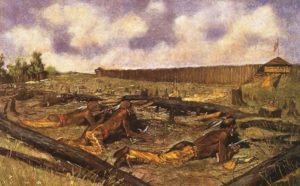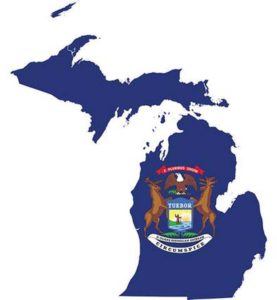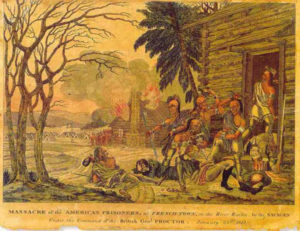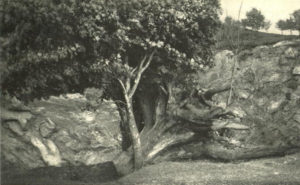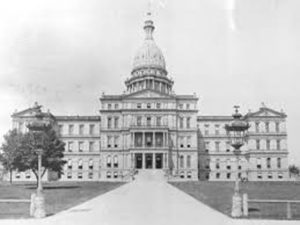The Wolverine State of Michigan was the 25th state to join the union in 1837. This Midwestern state borders 4 of the Great Lakes and comprises over 11,000 inland lakes throughout the Upper and Lower Peninsulas. It is said that, “you can not travel more than 5 miles in Michigan, in any direction, without crossing a lake, river, or stream.”
1622
The first white men to see Lake Superior are the French explorer Etienne Brule, and his partner Grenoble.
1668
French Jesuit missionaries Fathers Jacques Marquette and Claude Dablon founded Michigan’s first European settlement at Sault Sainte Marie, and later they founded St. Ignace.
1673
Jacques Marquette, a fur trader Louis Jolliet and five explores leave the newly established Indian mission at St. Ignace on May 17th and begin the first exploration of the river the Indians call the “Messissipi”
1701
French explorer Antonine de La Mothe-Cadillac founded a trading post at a site, “at le Detroit” (the straits) in the waterway between Lakes St. Clare and Erie and he named it Fort Pontchartrain.
1715
The French establish Fort Michilimackinac at the Straits of Mackinac.
1760
The British end French rule in Detroit with the surrender of Fort Pontchartrain.
1763
After capturing all the forts in Michigan, Indian Chief Pontiac leads a 135-day siege of Detroit but he is unable to take the last remaining fort.
1787
The Northwest Ordinance of 1787 describes the process for gaining statehood in the Northwest Territory, of which Michigan is a part.
1792
The first election takes place in Michigan under the supervision of the British government and the Parliament Constitutional Act.
1796
The British abandon Fort Detroit and they leave their Great Lakes settlements.
1805
The territory of Michigan is established, and Detroit is selected as the government seat, and William Hull is selected for the states first governor. Later the same year hot ashes from a pipe started a fire in the local banker’s stable and Detroit is devastated by the fire.
1812
In the War of 1812, William Hull surrenders at Fort Detroit to the British and Fort Mackinac also surrenders.
1813
US Brigadier General James Winchester against direct orders relocates his forces of almost 1000 regulars and Kentuckians and then they are overwhelmed by 1,300 British and Indians at the Battles of Frenchtown, also known as the Battle of the River Raisin. American armies return to Detroit and Lewis Cass is selected military and civil governor of Michigan Territory.
1819
Michigan sends its first delegate to Congress. Native American Indians surrender 6 million acres of land to the settlers in the Treaty of Saginaw.
1828
The Territorial Capitol is built at Detroit for a cost of $24,500. The building served the State Territorial Government until 1847 when the capital was moved from Detroit to Lansing. The building was utilized as a elementary school and library up until a fire burned it down in 1893.
1835
Michigan and Ohio go to war over a nonaggressive boundary dispute between the two states known as The Toledo War. Michigan surrendered the Toledo strip for the western half of the Upper Peninsula when the state was not allowed admittance into the Union. Stevens T. Mason is inaugurated as the first Governor of Michigan at the First Constitutional Convention.
1837
Michigan becomes the twenty-sixth state to enter the Union.
1841
The first classes of the University of Michigan are held in Mason Hall after the school was moved from Detroit to Ann Arbor.
1842
Copper mining operations begin at the town of Clifton and Cliff Mine in Keweenaw County.
1844
Iron ore is discovered in the Upper Peninsula at Negaunee at the stump of this tree.
1847
The State Legislature passes a law to build the State Capital in Lansing. Francis Troutman a fugitive slaves from Kentucky along with numerous others make their escape to Adam Crosswhite’s family farm through the Underground Railroad.
1854
Former members of the Whig Party who had shown itself incapable of coping with the national crisis of slavery establish the Republican Party, a new political party to oppose the spread of slavery into the western territories.
1855
President Millard Fillmore signed legislation allowing a canal to be built at Saulte Ste. Marie between Ontario and Michigan, and it opens June 22th.
1863
Union forces are beaten at Chancellorsville and General Robert E. Lee marches his Army of Northern Virginia into Pennsylvania triggering the Battle of Gettysburg, the most important battle between the north and south of the American Civil War.
1861-1865
During the Civil War almost 100,000 men were Michigan Civil War soldiers like the 3rd Michigan Infantry.
1877
Michigan lumbering was revolutionized with the opening of the 7.1 mile-long Lake George and Muskegon River Railroad. Winfield Scott Gerrish moved 20 million board feet of logs to the Muskegon River with his new but short railroad.
1879
The Michigan State Capital moved from Detroit to a wooded building in Lansing then to the new State Capital building designed by architect Elijah Myers at a cost of $1,500,000.
1896
In Detroit Charles King is the first person to test drive a gasoline-powered automobile and three months later Henry ford drives his two-cylinder, gasoline-powered, quadricycle.
>>> Click here <<<
Time Line – Michigan 1908 – 2012
Word count: 826







